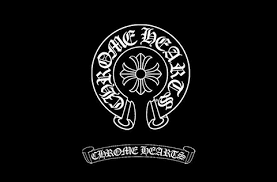How Luxury Brands Innovate Marketing: The Chrome Hearts Strategy
Kevin Abbaszadeh
Staff Writer
The luxury industry is always evolving to create new styles, and meet the expectations of their discerning customers. To stay elite, these luxury brands must set themselves apart through more than just product quality- marketing plays a key role.
For decades, luxury brands have been separated from their mass-market counterparts not just due to their price tag, but because of their sense of exclusivity and unattainability. Luxury brands thrive on scarcity, offering products that are often produced in small quantities, even one-off products. The craftsmanship involved in creating these items, paired with high-quality materials, reinforces the perception that owning them is a status symbol.
One of the most effective ways luxury brands cultivate desire is through exclusivity. Consumers want what they can’t have. Consumers aren’t just buying a product—they’re buying a piece of history, a connection to something greater. Chrome Hearts, though a more recent player, follows a similar model by marketing itself as an edgy, counterculture brand that appeals to those who want to stand out from the crowd. Chrome Hearts has built a strong following with a marketing strategy that defies traditional advertising norms. Founded in the fashion-forward 1980s by Richard Stark, the brand taps into the rebellious spirit of rock-and-roll, creating jewelry, apparel, and accessories that resonate with those who reject mainstream trends.
Image shows the iconic Chrome Hearts logo
(Photo courtesy of IPR Daily)

What makes Chrome Hearts stand out from other high-fashion brands is their reliance on scarcity and word-of-mouth. The brand rarely engages in large-scale commercial advertising campaigns, and instead cultivates its image through limited releases, collaborations with high-profile figures like Bella Hadid, Drake, and Virgil Abloh, and by maintaining a sense of mystery. The stores themselves are elusive, often hidden in plain sight, adding to the air of exclusivity.
In today’s digital age, influencer culture has become an essential component of luxury marketing. Chrome Hearts carefully selects influencers and celebrities who embody the brand’s values. These collaborations do more than just increase brand awareness; they also help to strengthen the brand’s identity. While mass-market brands rely on broad-reaching commercial advertising, luxury brands keep their circle small and controlled, ensuring that their products retain a sense of exclusivity and prestige. The scarcity of Chrome Hearts products, combined with celebrity endorsements, keeps demand high while maintaining the brand’s exclusivity.
Luxury brands, whether traditional like Chanel or more unconventional like Chrome Hearts, have mastered the art of instilling desire through meticulously crafted marketing strategies. These brands keep their products in high demand by emphasizing scarcity, branding, and influencer partnerships. As digital culture continues to evolve, it will be interesting to see how luxury brands adapt their marketing to stay ahead in an increasingly accessible world.
Contact Kevin at abbaszke@shu.edu

